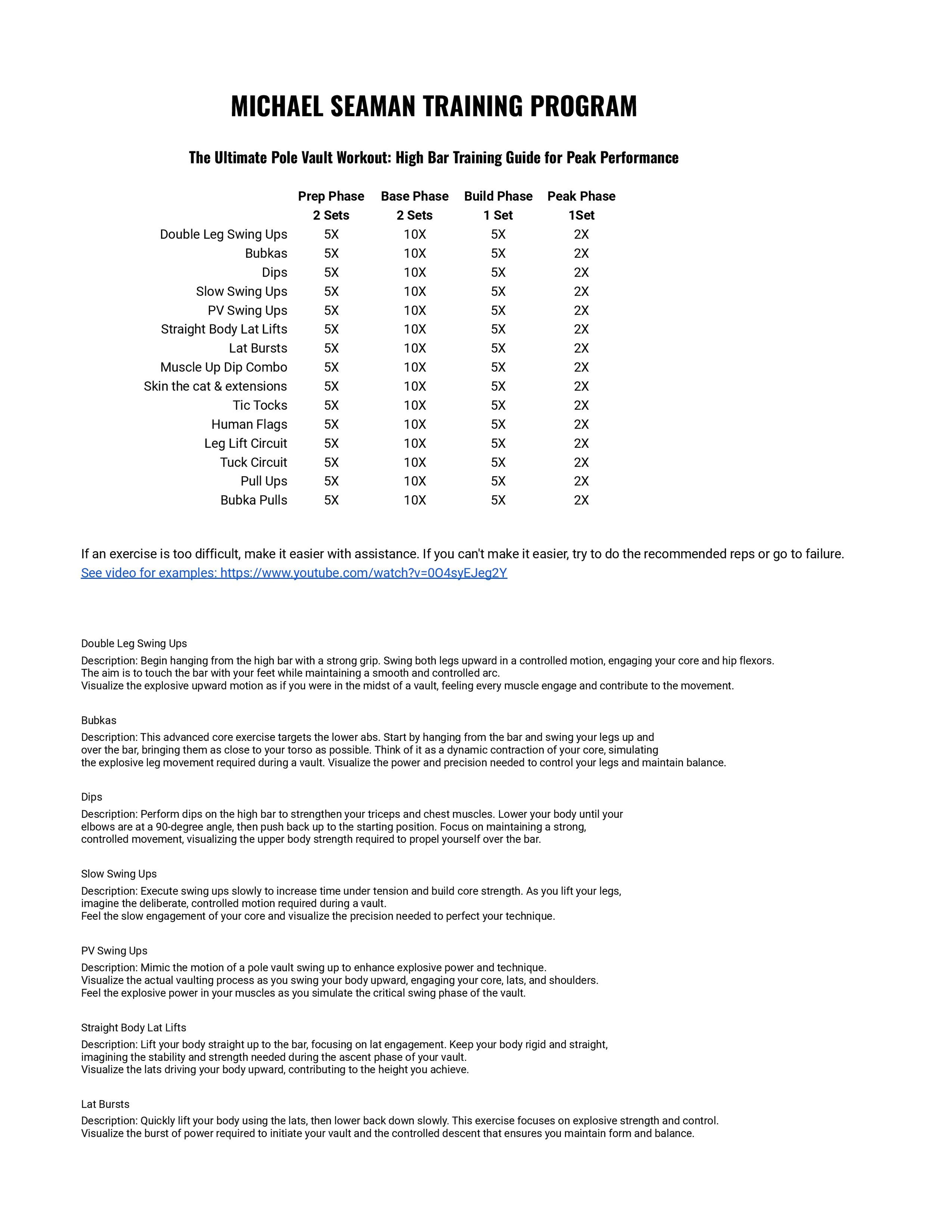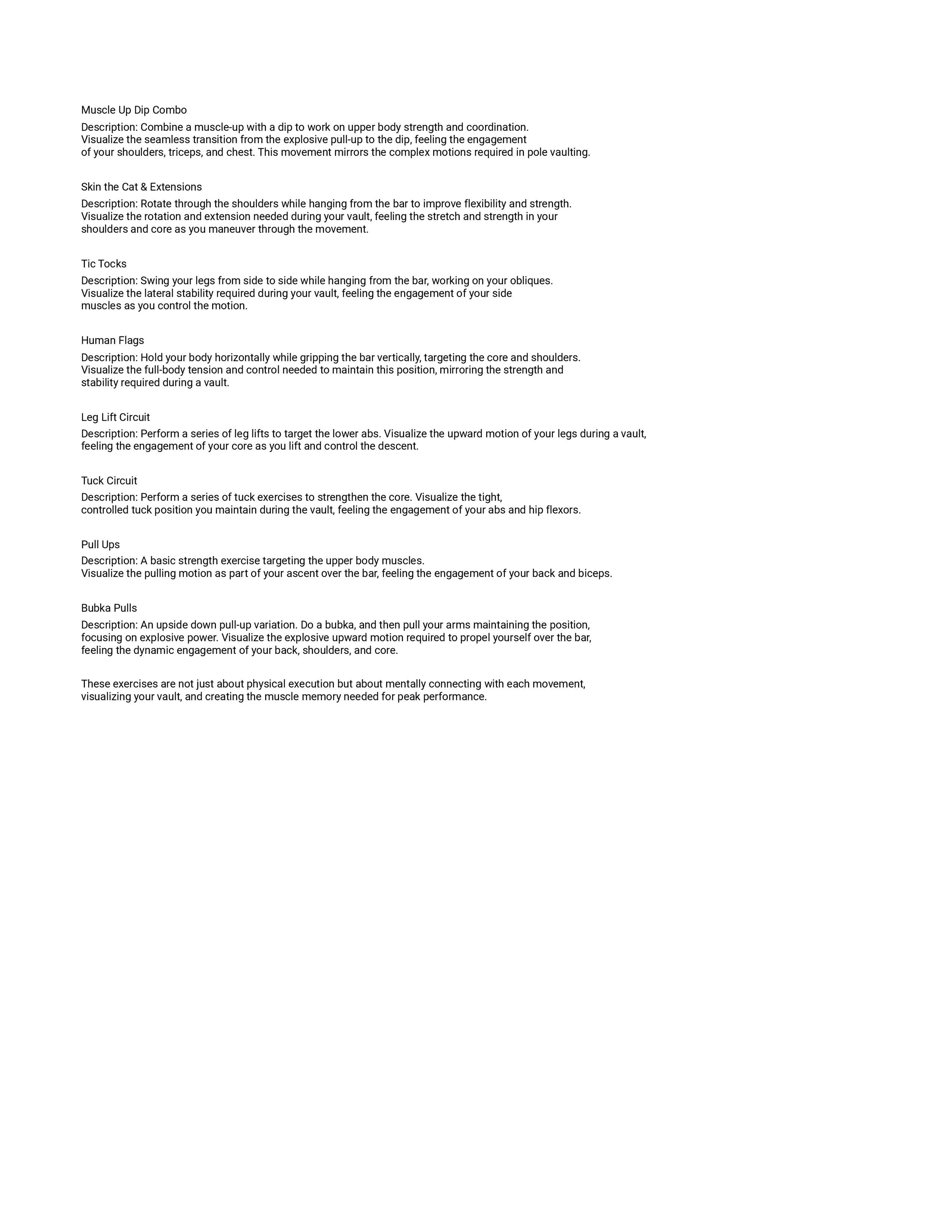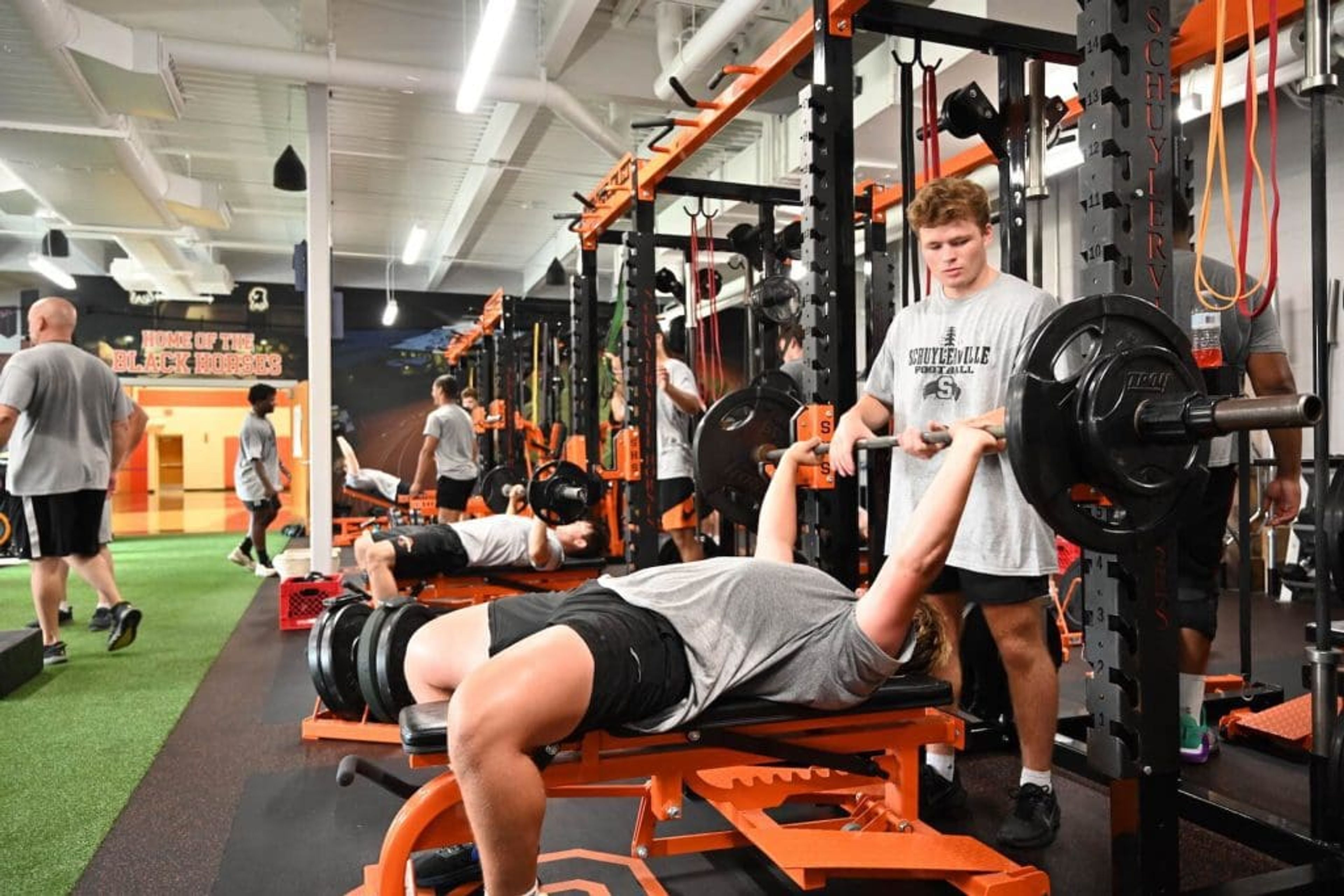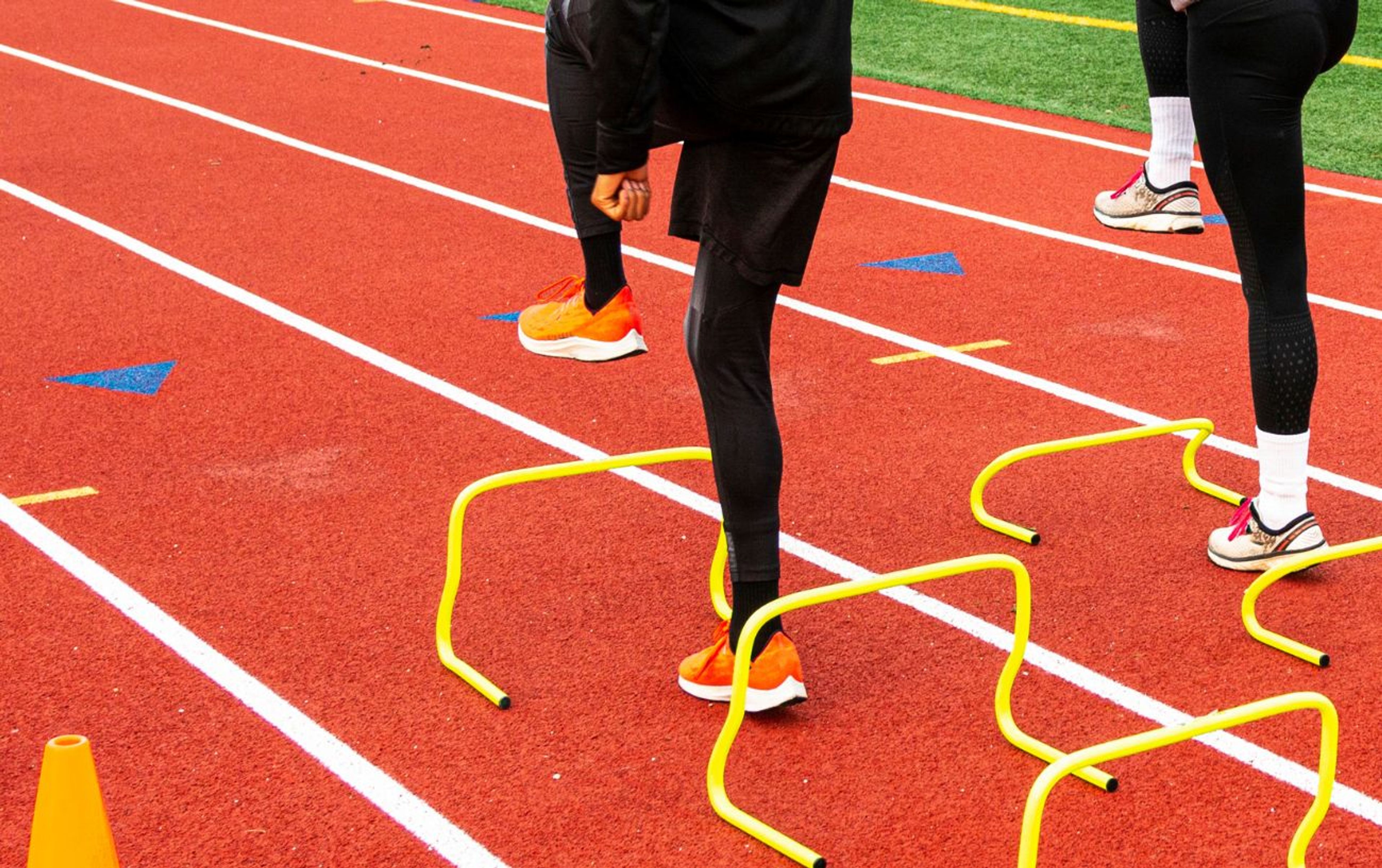The Ultimate Pole Vault Workout: High Bar Training Guide for Peak Performance
Unlock peak performance with our ultimate Pole Vault High Bar Training Guide. Discover the essential exercises, historical insights, and a year-round program to elevate your vaulting skills for indoor and outdoor championships.
The Ultimate Pole Vault Workout: High Bar Training Guide for Peak Performance
Introduction
Pole Vault High Bar training is an essential component of any serious vaulter's regimen. This specialized training technique not only builds strength and coordination but also hones the specific skills needed for peak performance. In this comprehensive guide, we will explore the importance of high bar training, its historical significance, and provide an annual program designed to help vaulters achieve their best in both indoor and outdoor track championships.
Importance of Pole Vault High Bar Training
High bar training is crucial for pole vaulters because it focuses on developing upper body strength, core stability, and technical skills necessary for effective vaulting. The high bar mimics the motions and forces encountered during a vault, making it an invaluable tool for practicing and perfecting technique. Additionally, high bar exercises improve grip strength and body control, which are essential for maintaining form and achieving greater heights.
History and Epic Stories of Vaulters Using the High Bar
The use of the high bar in pole vault training dates back to the early 20th century. Legendary vaulters such as Bob Richards, the first two-time Olympic pole vault champion, incorporated high bar routines into their training regimens. Richards, known for his unparalleled strength and agility, credited high bar exercises with helping him refine his technique and build the physical prowess needed to dominate the sport.
In more recent times, vaulters like Sergey Bubka and Renaud Lavillenie have continued the tradition of high bar training. Bubka, who set 35 world records during his career, was known for his rigorous high bar workouts, which contributed to his explosive power and unmatched consistency. Lavillenie, the current world record holder, also emphasizes high bar training, highlighting its importance in maintaining peak physical condition and perfecting vaulting mechanics.
Reasoning Behind the Annual Program
An annual high bar training program is essential for vaulters to systematically develop their strength, technique, and overall performance. By following a structured program, athletes can ensure they are progressively building their skills and avoiding plateaus. The program outlined here is designed to peak twice a year, aligning with the indoor and outdoor track championships, ensuring that vaulters are at their best during the most critical competitions.
Annual High Bar Training Program
The annual high bar training program is divided into four phases, each aligning with the general training phases of a college track athlete. This structured approach ensures consistent progress and peak performance during both indoor and outdoor championships.
Training Phases
Preparation Phase (June - August)
Goal: Build a solid strength foundation.
Weekly Schedule: 3 Workouts Per Week
- Sets and Reps: 2 sets of 5 reps
Base Phase (September - November)
Goal: Increase strength and introduce power movements.
Weekly Schedule: 3 Workouts Per Week
- Sets and Reps: 2 sets of 10 reps
Build Phase (December - February)
Goal: Focus on strength and power development.
Weekly Schedule: 2 Workouts Per Week
- Sets and Reps: 1 set of 5 reps
Peak Phase (March - May)
Goal: Maximize power and speed, taper for peak performance.
Weekly Schedule: 2 Workouts Per Week
- Sets and Reps: 1 set of 2 reps
Example Weekly Routine:
- Monday: Double Leg Swing Ups, Bubkas, Dips, PV Swing Ups, Muscle Up Dip Combo.
- Wednesday: Slow Swing Ups, Straight Body Lat Lifts, Lat Bursts, Skithe Cat & Extensions, Tuck Circuit.
- Friday: Pull Ups, Bubka Pulls, HumaFlags, Tic Tocks, Leg Lift Circuit.
The Mental Workout: Visualization and Muscle Memory
High bar training is not just about physical strength and technique; it also involves a significant mental component. Properly engaging in high bar exercises requires visualization and muscle memory to translate these workouts effectively to pole vaulting. When performing high bar drills, athletes should imagine themselves in the midst of a vault, feeling the same muscle engagements and explosive movements.
"Visualization is key in any sport," says Dr. John Smith, a renowned sports psychologist. "When athletes mentally rehearse their movements, they activate the same neural pathways as when they physically perform the actions. This helps in creating a stronger muscle memory and enhances performance."
Pole vaulter and Olympic medalist Renaud Lavillenie emphasizes the importance of mental focus during training: "Every time I train on the high bar, I picture myself vaulting. This mental practice helps me perfect my technique and stay explosive, even when I'm just doing strength exercises."
When working on strength exercises, it's crucial to perform them properly and with intention. "The quality of movement is more important than the quantity," says sports psychologist Dr. Amy James. "Athletes should focus on the correct form and engage their muscles as they would in competition. This approach not only builds physical strength but also reinforces the right muscle patterns."
By incorporating mental workouts into your high bar training, you can ensure that every drill and exercise contributes to your overall performance in pole vaulting.





